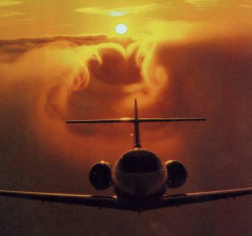Contact:C.H.K. Williamson (cw26@cornell.edu)
Phone:227-6176
Office/Lab:
WEB SITE: http://www.mae.cornell.edu/fdrl
The Aircraft Wake Phenomenon - Project 1
This is an important problem to the US Air Force, and the FAA, since it concerns flight safety, where the tip-vortex wake of one aircraft can be a hazard to other maneuvering aircraft. Our approach is both visual and exciting in that fluid motions can be very beautiful, as well as important from the standpoint of fundamental vortex instabilities and turbulence. We shall study the motion and instabilities of these tip vortices, involving their small and long wavelength instabilities, and their interaction with the ground.
Flow Visualisation! We will undertake flow visualisation as a part of this project, and this will involve digital cameras at high resolution, and techniques to visualise fluid flow, principally employing Laser-Induced Fluorescence. The project will be beautiful as well as scientific!
Facilities: We have built a novel Computer-controlled XY Towing Tank, a 26-foot Water Channel and also a Vortex Generator Facility, all of which will be used to visualize the trailing vortex pair wakes of aircraft, and problems in Vortex-induced vibrations in a set of projects suitable for bright MEng research! This work follows from several enjoyable projects over the last 3 years.
DPIV (Digital Particle Image Velocimetry). Exciting development of this front-line technique is needed as a part of the project. DPIV is a modern technique which enables us to determine the velocity and vorticity fields in 2D slices of a fluid, using the motions of neutrally-buoyant fluorescent particles. It is part of our Fluid Image Processing Center.
This project will give the student exposure to research computational analysis, design of a fluid mechanics experiment, the use of various flow visualization techniques, photography, video and also fluid mechanics instrumentation in challenging and important problems. The tools gained by the student will be exceedingly useful to future work in fluid mechanics and aerospace.
